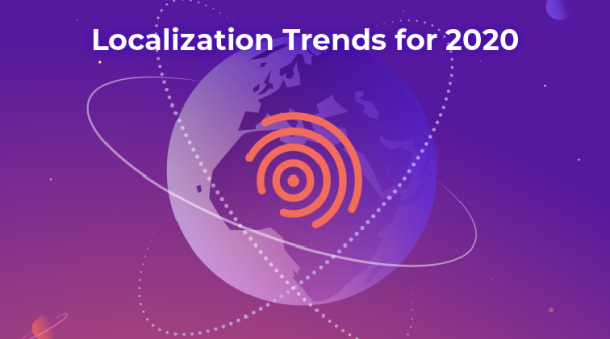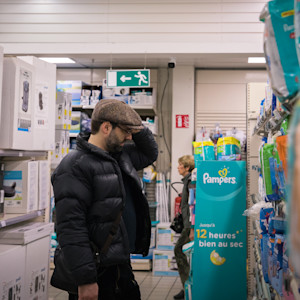Matt Grech
Content Marketing ManagerSmartling
Our world is fueled by content. It's how we connect, sell to each other, inform each other, and share our creativity. Content is the crux of everything we do.
As the sheer amount of content we consume continues to explode and as internet accessibility around the world increases, the need for translated content to reach these new users in their native language will scale.
This will coincide with the development and growth of our industry's technology. New advances in automation, Neural Machine Translation, and AI-driven services will continue to push localization and translation into the future of technology.
1. Increasing translation demand
As of June 2019, there were over 4.4 billion users consuming content online. That means 474,000 tweets per minute, 400 hours of new video uploaded to YouTube every minute of every day, and over 3.5 billion Google searches every single minute. That's 2 trillion Google searches, around the world, per year.
Not to mention that of those 4.4 billion users, 2.3 billion are from Asia, 700 million from Europe, 453 million from Latin America, and 175 million from the Middle East. Compare this to 327 million users from North America, and suddenly the world begins to look a lot bigger—and the need to translate your content much more prominent.
Brands will need to focus on global content as a whole, encompassing localization, translation and more importantly, transcreation.
2. The rise of machine translation
Machine translation has begun to hit its stride in just the past few years. Modern Neural Machine Translation engines are designed to mimic how the human mind learns, gaining more knowledge over time.
These engines seek to understand the context of what is being translated to properly predict the correct word choice.
NMT development and usage will only continue to increase with more real-world use cases for the technology.
We'll begin to see even more domain adaptive NMT models being leveraged by major LSPs and Enterprise organizations. These models can "learn" and adapt to a specific domain based on previously translated content.
3. The increased importance of specialized content
While machine translation is taking off, it doesn't mean that human translators will fall to the wayside.
As more companies are becoming global and recognizing the importance of localizing their content, there will be a much stronger focus around providing authentic user experiences.
This is where transcreation comes into play.
Transcreation is the process of adapting content from one language to another while maintaining the existing tone, intent, and style. Essentially, transcreators create new content that has been inspired by your brand's source content.
The overall message, theme, and tone remain, while the content is created with that new market's cultural nuances and preferences in mind. This will require the talented and inquisitive mind of a professional human translator, and cannot be handled by an adapting MT engine alone.
4. Even more AI and automation
According to Gartner, AI augmentation will create $2.9 trillion of business value, and 6.2 billion hours of worker productivity globally in 2021.
While Smartling is already leveraging AI, we will continue to see a big push in hyper automation and AI in translation management systems as we look for new ways to simplify the translation workflow and inject AI to improve quality.
AI will continue to be augmented into our solutions to support our work and help us make informed decisions.
According to Svetlana Sicular, Research Vice President at Gartner, "augmented intelligence is all about people taking advantage of AI. As AI technology evolves, the combined human and AI capabilities that augment intelligence allows will deliver the greatest benefits to enterprises."
5. New content channels
As our demand for content continues to skyrocket, there will be an even bigger push for new content mediums as companies look to solidify their brand identity.
Video, for example, will be massive. Impact, an inbound digital marketing agency, has predicted that in 2022, 82% of all consumer internet traffic will come from video.
We've already begun to see Google prioritizing and including videos in popular search results and brands leveraging video content in their marketing strategies.
And, of course, all of those videos will need to be translated and localized. Voice is another interesting intersection of translation and content. Microsoft conducted a survey in which 69% of participants already used a digital assistant, and that 75% of homes will have some kind of smart speaker by 2020.
Expect to see a much larger push for content beyond written text, and a new demand to have that content translated as organizations focus on branding as a whole.
6. Multilingual support
Brands that are looking to grow will need to focus on language accessibility, as we discovered in our recent Retail Data Report. Language accessibility first starts with localizing your brand experience and product offering, but comes full circle with localized support.
Support is a critical aspect of the customer lifecycle. In 2019, Hubspot reported that an increase in just 5% customer retention can lead to an increase in 25% profit.
And to ensure that 5% customer retention, brands need to provide amazing experiences, including ongoing support. According to the same article, 50% of customers increase their purchasing with a brand after a positive customer service experience.
Localized support, including multilingual chatbots, translated help centers, and native-speaking customer service departments will enable your brand to keep customers coming back, no matter the language they speak.
The Bottom Line
In the last 10 years, we have seen several changes that have shaken up the localization and translation industry. As we predicted, everything moved into the cloud, and the world continued to get smaller as information was able to flow more freely.
Visual context has become a vital element of translation for both our platform and linguists, and companies have become far more agile than they ever were in their buying, strategy, and ability to produce content at a rapid scale.
The future, of course, will bring only even more change. However, we're confident that Smartling is in the right spot to spearhead this innovation. With a clear focus on AI, automation, and content as a whole, Smartling is ready to enter the next decade.









